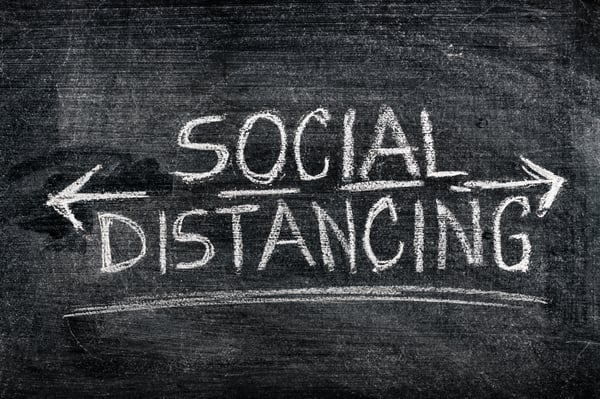
The COVID-19 pandemic has given an entirely new significance to the old adage, “Give me some space.” Social distancing has become part of everyone’s vocabulary and lifestyle over the last several months.
The Occupational Safety and Health Administration (OSHA) strongly recommends workers socially distance, and follow the Centers for Disease Control and Prevention (CDC) guidelines for social distancing.
Accomplishing this in many workplaces and environments can be a challenge. SafetyPro Resources, LLC wants to provide some important information and helpful strategies to assist employers and employees in the battle to slow the spread of COVID-19.
Why is Social Distancing Important?
Although certain work must be carried out and the overall economy cannot realistically be shut down, cases of COVID-19 are again on the rise. COVID-19 spreads easily between people, especially if they are in close contact. The risk is even higher for those who remain in close contact for longer than 15 minutes, especially indoors.
The virus spreads through droplets expelled from the mouth or nose when a person coughs or sneezes, and these particles can land on common surfaces. Others touch these surfaces and then touch their mouth or nose, infecting themselves without even knowing it. This is likely a common method of transmission on job sites where workers touch the same surfaces.
Social distancing, or keeping at least a six-foot distance between yourself and others, reduces the risk of catching the virus or passing it on to someone else. It is believed that droplets carrying the virus particles are unlikely to carry that distance. Also, refraining from touching anything that isn’t absolutely necessary is important to slow the spread of the coronavirus.
 The Challenges of Social Distancing at Work
The Challenges of Social Distancing at Work
Many employees have had the opportunity to work from home and have much more control over their working environment. Others do not enjoy this privilege. Many workers must go to where the work is located, and the nature of their duties makes it impossible to “take it home.” Such is the case with almost all of those in construction-related industries.
Some practical and logistical obstacles that make social distancing at work a challenge include:
- Workers or stakeholders who do not practice social distancing or wear masks
- Work that requires more than one employee in close quarters
- Work that requires close contact with other workers
- Touching surfaces others have touched
- Work that requires physical contact with other workers
- Work that takes place outdoors where many may not think it necessary to wear a mask
Tips for Social Distancing at Work
Beyond the civil and moral duty for everyone to do everything possible to stop the spread of COVID-19, there are occupational health and safety regulations in place that seek to ensure a safe work environment for everyone. OSHA has published a bulletin with recommended guidance for social distancing at work. SafetyPro Resources, LLC also recommends the following tips:
- Be proactive, and even more assertive, about social distancing. It is your responsibility to be as proactive and aware as possible. This can include being more assertive with your work colleagues. Good working relationships can make this easier. Try these scripted lines:
- “Would you mind taking a few steps back? I’m high risk/trying to stay safe/do not want to spread the virus to my elderly parents.”
- “I know it’s weird to be so distant, but I’m really anxious about the virus. Can we talk where there is more room to socially distance?”
- “Can we have this conversation over the phone or instant messenger?”
- Be proactive about implementing safe workplace policies. Workplace policies that require masks, social distancing, and other safety rules can make it easier to be assertive with colleagues. Some OSHA recommendations you can implement include:
- Workers should stay home if they are sick.
- Sick workers should immediately isolate, and not remain in common areas.
- Implement flexible work hours where possible.
- Install partitions to create more barriers.
- Use tape or other guidance to mark off 6 feet, so people can socially distance more easily.
- Ask about working alternate schedules. Some examples can include:
- Dividing workers into two or three shifts so fewer workers are present
- Staggering shifts to allow for varied work schedules when jobs permit
- Adding more shifts to accommodate more varied work schedules, like over weekends
SafetyPro Resources, LLC can also help your company learn more about legal considerations in the workplace regarding COVID-19. Certain laws for the disabled still apply in spite of the coronavirus, and they may have even more significance now. Also, The Families First Coronavirus Response Act entitles workers in most jobs to more paid family medical leave in the event they need to take time off to care for sick family members.
For more assistance with safety issues in your company, especially those connected with COVID-19, call or message us online today.
















